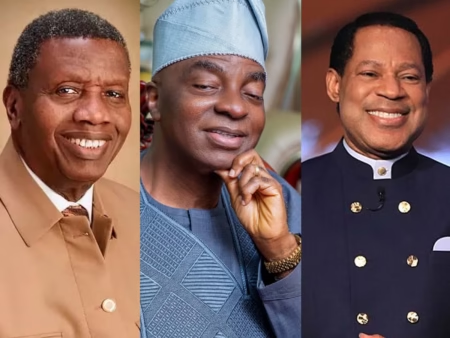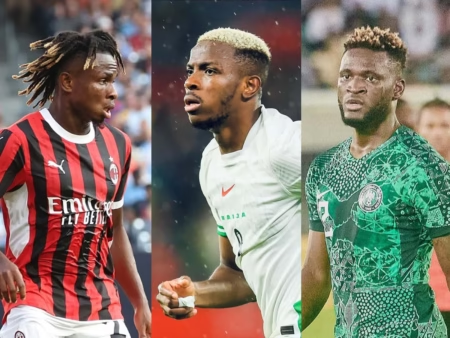There’s no denying that the musical foundation of entertainment has shifted drastically to a grimmer reality over recent years. Today, everyone who makes music sings about killing every other person who produces music, almost like a free-for-all featuring everyone you like.
And with almost every renowned musician dropping like flies, it’s time we graft an understanding of the deeper interplay between musical narratives and the seemingly paradoxical dichotomy of life and death amongst artists.
The prevalent glorification of violence and associated themes in music, some of which can be seen in “Gun Violence” by Immortal Technique, “223’s” by YNW Melly, and “Murder on My Mind,” particularly within hip-hop culture, has raised disturbing questions about its societal implications, and the identity of Hip-Hop itself.
The explicit display of aggression, rebellion, anarchy, and murder, coupled with irrational visual imagery and overt depictions of street identities, has often captivated many; perhaps these are the substances that garnered a crowd for the genre. However, this in its entirety doesn’t nearly capture the horrors of contemporary music, nor does it scratch the surface of its repercussions to come.
While on the surface, it appears appealing to everyone, it gets much darker as you gait down the corridor of experience to understand this drastic shift from simple melodious beats and rhythm to an extreme depiction of cut-throat mannerisms and behaviors.
Would it be safe to say that popular demand influenced this change in Hip-hop? Well, it goes far beyond that.
The answer likely extends beyond such mere oversimplification. while the evolution of music and what it stands for doesn’t bear witness to the present reality that preaches gun violence, the overarching demand has spawned a dire resolve to explore, to step into the engine room of what fuels this dimension of music, and how we can sort out a profound link between street culture and the hip-hop?
Historical Rise: Was Hip-Hop any different Before?
The presence of Hip-Hop from previous times had phased through crucial timelines, with each period funneling out a different style of performance honed and crafted by prevailing dogmas. Yes, Hip-hop was different if placed under the crosshairs of technicality given that its reason for existence panned out from crushing experiences, a chronicle of survival, and not as a way to issue threats, flaunt wealth, or mark territories.
Hip-hop, originally a product of the late 1970s, made its first stroke on the canvas of the Bronx, a clamoring borough of New York City. It was birthed from the resilience and unceasing creativity of marginalized societies, serving as an aural mirror to the life lived, where each lyric and rhythm communicated raw realities, including their battles and triumphs.
DJ Herc, otherwise known as Clive Campbell, laid the foundation for Hip-Hop as a towering enterprise using a guitar amp and two turntables. He had hosted a party in his building at 1520 Sedgwick Avenue, and the outcome had led Marcus Reeves, an independent Journalist and author, to crown Campbell as the cronner. He said, “Kool Herc brought the idea of the Jamaican sound system to America” in the fine print of Somebody Scream! Rap Music’s Rise to Prominence in the Aftershock of Black Power.
With “Grandmaster Flash”, a legendary Jamaican-American DJ, musician, and record producer, affirming the transformative power of hip-hop, he pointed out that “Hip-hop basically comes from poverty, and that’s black and Latino communities in America.”
Hip-hop’s roots can simply be traced back to street culture, which has always been a hotbed for creative expression, from fashion to art to music. The connection between street culture and hip-hop is deeply etched in its very foundation, like heads and tails of the same coin, as hip-hop has always been a reflection of the streets.
The music genre, initially serving to avert senseless gang wars, spiraled out of pure poetry, placed against radical instruments, and for decades, it had served as a voice for the voiceless, giving a platform to those whom society had falsely labeled, denied existence; stuffed away in a coffin to wrench at their existence, ignored or silenced.
In exploring this connection, one can see how hip-hop has evolved over the years, adapting to new sounds and styles while staying true to its roots.
The influence of street culture can be seen in everything from the fashion choices of hip-hop artists to the themes explored in their music.
The culture has also had a significant impact on the way hip-hop is marketed and consumed.
Cultural Significance: What Did Hip-hop Mean?
The profound significance of Hip-Hop can be witnessed in the defiant graffiti that adorns city walls, the moving rhymes that vibrantly echo through the alleys, and the pulsating beats that serve as proof, that the once marginalized people have found their voice.
As an art, Hip-hop has transcended its humble origins in the streets of the Bronx to become a global phenomenon. Aside from bestowing an active presence to the marginalized lots, the spirit of Hip-hop and its values had assumed another integral facet in a society coming off in the form of Graffiti!
The colorful and often provocative murals that adorn city walls serve as visual representations of the struggles and triumphs of the communities that birthed the genre. These pieces of art not only beautify the urban landscape but act as political statements, challenging societal norms and demanding recognition.
The rhymes and lyrics that flow through the alleys carry the weight of lived experiences. They had earlier spoken of poverty, discrimination, and the daily struggles faced by those living in marginalized communities.
The substances behind these lyrics reflected the realities faced by individuals who have been systematically silenced, oppressed, and devalued.
The pulsating beats that form the backbone of Hip-Hop music are a testament to the resilience and creativity of street culture. From the infectious rhythms of breakdancing to the innovative sampling techniques used in production, Hip-Hop beats have an undeniable energy that captivates listeners. They serve as a unifying force, bringing people together on dance floors and in concert venues, transcending barriers of race, class, and geography.
Past Vs Present: Hip Hop in our Modern Times
In the global context today, the crisscrossing roads of Hip-Hop and street culture have become a vital cultural crossroads. It is more than evident in the adoption of street fashion by luxury brands, the mainstream integration of Hip-Hop elements in pop culture, and its far-reaching effect resonating among diverse audiences worldwide. However, the reality of the streets that birthed Hip-Hop is often overlooked, and the struggles of those who live in these communities are forgotten.
Hip-hop and street culture have become a beacon of hope for marginalized communities worldwide. The music genre has given a voice to those who have been silenced for too long, and street culture has provided an outlet for creativity and self-expression. However, the dark reality of the streets that birthed Hip-Hop is often ignored. The poverty, violence, and discrimination faced by those living in these communities are still very much a part of their daily lives.
Though these, of course, had lived on the surface for too long, the modern depiction of Hip-Hop had rewritten those narratives, turning around the tides of values and culture for personal accolades.
While the idea originally lived on to reflect the diminutive state of marginalized communities through strong lyrics and flashy visuals, the state of Hip-hop doesn’t necessarily recount the tales of survival anymore. However, it borders mostly on the irrational depiction of wealth, as illustrated in Rae Sremmurd’s “No Type,” “If you ain’t talkin’ money, we don’t wanna talk.” Aside from that, there are also public declarations of gang war and senseless feuds,
As seen in the case of Young Thug vs Rico, whose lyrics from his 2016 cut “Slime Sh!t” were admitted as evidence in a trial to establish the nature of the Young Stoner Life (YSL) collective as a racketeering enterprise with implications of criminal street gang activities.
His lyrics read:
“Hey, this that slime sh*t, hey/YSL sh*t, hey/Killin’ 12 sh*t, hey/F**k a jail shit, hey…“Cookin’ white brick, hey, hey/I’m not new to this, hey, I’m so true to this, hey I done put a whole slime on a hunnid licks, hey, hey.
…“Slime or get slimed/In the VIP and I got that pistol on my hip/You prayin’ that you live/I’m prayin’ that I hit/Hey, this that slime sh*t…F**k, f**k the police, in a high speed…..Got banana clips for all these ni**as actin’ monkey.”-Slime Shit
Then again, these are the substances that make people go wild for more.
So then, does it mean popular demands are the overruling factor in deciding which reality Hip-hop assumes? No!
The presence of Juvenile violence, and uncontrolled murders come off as a source of clout. While most hard-boiled gangsters are lobotomized or inactive in real-time, the constant display of thug life by present rappers, the likes of 6ix9ine, NLE chopper, and NBA Youngboy, were mostly as source material for lyrics and hardly a testament to growth and survival.
With evidence suggesting that Tekashi 6ix9ine’s gangster image is not authentic, In Daniel Henandez vs The States. His involvement in court cases, such as the one involving the Nine Trey Gangsta Bloods, has revealed that his affiliation with the gang peeled off for career authenticity and didn’t display genuine gang involvement.
Further Legal proceedings and arguments have edged around 6ix9ine’s lyrics, claiming they contain evidence of organized crime and gang participation. With this purview, lawmakers have sought limits on using rap lyrics as criminal evidence, citing cases like 6ix9ine’s, as most rappers only parasite on the influence of gang activities for career growth.
Despite this, the influence of Hip-Hop and street culture on mainstream culture cannot be denied. From high-end fashion brands to pop music icons, everyone wants a piece of the Hip-Hop pie.
Street fashion has become a staple of luxury brands, with designers drawing inspiration from the vibrant energy of street culture. Today, we’ve got Yeezy, Supreme, and perhaps Bored Ape NFts, all influenced by street culture. The mainstream integration of Hip-Hop elements in pop culture has also had a significant impact, with artists from different genres incorporating rap verses and beats into their music.
This far-reaching effect has helped to break down barriers and bring people from all walks of life together. However, it is important to remember that Hip-Hop and street culture are not just trends or fashion statements. They are born out of real experiences and struggles faced by marginalized communities. It is crucial that we do not forget the dark reality of the streets that birthed Hip-Hop.
Going Beyond Biggie and Pac: what truly connects the streets with Hip Hop?
Central to the connection between hip-hop and the streets is the shared narrative of overcoming adversity. Hip Hop, as an art form, has served as a platform for musicians to express their lived realities, crafting lyrics that mirror the challenges and triumphs of the streets.
The raw, unapologetic storytelling found in the verses of legendary artists such as Notorious B.I.G. and Tupac Shakur has made their music an authentic reflection of the streets from which they emerged. Those who have experienced adversity and struggle on the streets recount deeply the narratives presented in their music.
The impact of Hip Hop extends beyond music and fashion to influence language and social norms.
Slang and expressions born from the streets like “thot,” “lit,” “Jiggy,” “mandem,” and “tripping” have also been adopted and celebrated within the Hip Hop community, enriching the lexicon of popular culture.
Again, Hip Hop culture fosters a spirit of self-improvement and resilience. The urban landscape has been a breeding ground for talent, with aspiring musicians, dancers, and graffiti artists honing their craft within communities shaped by struggle. Hip Hop’s emphasis on creative expression and skill-building has inspired individuals to rise above their circumstances through music, dance, and visual arts. The culture’s message of perseverance and determination speaks to those navigating the challenges of the streets, instilling a sense of hope and opportunity amidst adversity.
This vibrancy and vitality of street language have transcended boundaries, finding grounds in the lyrics of Hip Hop music. This fusion of linguistic elements has bridged communities and shaped a universal language that embodies the essence of the streets.
Hip-hop’s impact on the streets transcends entertainment; it serves as a powerful force that mirrors, validates, and empowers the experiences of individuals in urban environments.
The culture has not only provided a platform for expression but has also animated communities, fostering connection, creativity, and resilience. As we delve deeper into the connection between the streets and hip-hop, we realize that it is a bond forged by common experiences, aspirations, and the transformative power of cultural expression.
Against what you might have heard, not all stories assume the customary pattern of moving in a straight line. To some, it has no beginning, middle, or end, and much like the underbelly of streetlife and its unsuspecting connection to rap music, its procession was formed like a circle, regardless of its birth, rising peak, the integration of Streetlife and Hip-hop has no end, these are two elements bounded together; one does not survive without the other.



